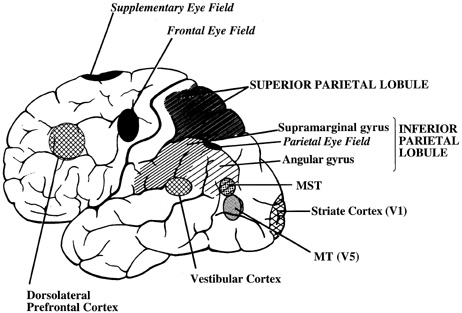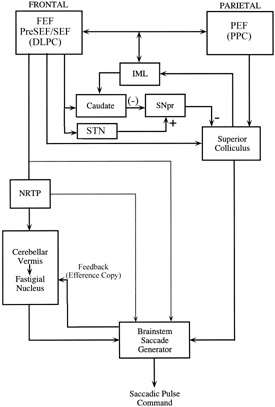



|
| Fig. 4. Areas of cerebral cortex and their projections that contribute to generation of saccades. A: Probable location of cortical areas important for eye movements in human brain MST, medial superior temporal visual area; MT, middle temporal visual area (V5); V1, primary visual cortex. B: Block diagram of the major structures that project to the brainstem saccade generator (premotor burst neurons in PPRF and riMLF). Also shown are projections from cortical eye fields to superior colliculus. DLPC, dorsolateral prefrontal cortex; FEF, frontal eye fields; IML, intramedullary lamina of thalamus; NRTP, nucleus reticularis tegmenti pontis; PEF, parietal eye fields; PPC, posterior parietal cortex; SEF, supplementary eye fields; SNpr, substantia nigra, pars reticulata; STN, subthalamic nucleus. Not shown are the pulvinar, which has connections with the superior colliculus and both the frontal and parietal lobes, and certain projections, such as that from the superior colliculus to nucleus reticularis tegmenti pontis (NRTP), and the pathway that conveys efference copy from brainstem and cerebellum, via thalamus, to cerebral cortex. (Modified from Leigh RJ, Zee DS. The Neurology of Eye Movements, 3rd ed. New York: Oxford University Press, 1999) |